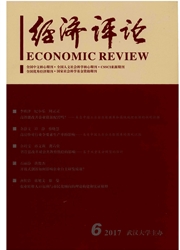

 中文摘要:
中文摘要:
在新结构经济学的理论框架下,基于新古典生产函数和效用函数理论建立数学模型,阐释过往历史阶段中国要素禀赋结构具有异质性的不同区域,其产业升级背后的产业政策干预机理和各种扭曲的诱因,进而聚焦于现阶段中国,剖析中国应如何实现低碳绿色型产业的发展。主要结论包括:(1)要素禀赋结构、产业政策、要素价格等是影响产业升级成功与否的主要因素,各种扭曲的诱因是产业升级目标与要素禀赋结构不匹配;(2)秉持绿色发展理念的当下中国,政府制定与能源技术禀赋相匹配的产业政策,有利于社会总福利的增加;(3)中国在制定产业政策扶持低碳绿色型产业发展时,应遵循各区域的比较优势,因地制宜、因势利导,"扶持有度"是消除各种扭曲的抓手。
 英文摘要:
英文摘要:
By using of neoclassical production function and utility function, we establish mathematic models based on the theory of New Structural Economics. Thus, as far as different areas of China that the structure of factor endowments are heterogeneous is concerned, the influence mechanism of industrial policy and the inducement of distortions in the past course of industrial upgrading are discussed.And then, we focus on the present stage in China, the way to realize the vision of low- carbon green industrial upgrading is explored as well. The main conclusions include : ( 1 ) The structure of factor endowments and the industrial policy, along with the factor price etc., are the main factors regarding to the success rate of industrial up inducement of distortions is the mismatching between the factor endowments and grading, the the goal of industrial upgrading. (2)Under the new phase of green developing, it is beneficial to the increase of the social total welfare according to the implementing of industrial policies that are matching to the green-power technical endowments. ( 3 ) The supporting of low-carbon green industry should be combined with the comparative advantage in different regions, it is one of the means to eliminate various kinds of distortions by avoiding excessive supports.
 同期刊论文项目
同期刊论文项目
 同项目期刊论文
同项目期刊论文
 Study on Optimization of Collaborative Innovation Network Structures Based on Grey Property of Knowl
Study on Optimization of Collaborative Innovation Network Structures Based on Grey Property of Knowl 期刊信息
期刊信息
